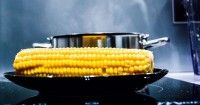Know the Benefits of Linoleic Acid for Babies
When babies start consuming solid foods, then you should think about a menu that contains nutrients to support their growth and development. One of the nutrients your little one needs is linoleic acid.
To note, linoleic acid is an essential fatty acid which is grouped into omega-6. Linoleic acid is needed to optimize your little one’s immune system so that it protects it from disease.
What are the other benefits of linoleic acid for babies? What types of foods contain linoleic acid? To help Mama fulfill your little one’s nutrition, the following is a summarized explanation of linoleic acid Popmama.com.
Linoleic Acid Benefits
As mentioned earlier, linoleic acid is needed to boost a baby’s immune system. This is because babies under one year of age are still susceptible to disease. In addition, linoleic acid is also useful for building cells, regulating the nervous system, strengthening the cardiovascular work system, and helping your little one’s body absorb nutrients from complementary foods.
Linoleic acid is also beneficial for eye and skin health. Babies who are deficient in linoleic acid can have skin problems such as dry and flaking skin, thickened skin, and skin disease in the folds.
Linoleic Acid Requirements
Based on the rules of the Indonesian Nutrition Adequacy Rate (RDA), babies aged 0-11 months are encouraged to consume 4.4 grams of linoleic acid. The need for linoleic acid will increase as your little one gets older.
For example, babies 1-3 years old need 7 grams of linoleic acid per day. Meanwhile, the need for linoleic acid for children aged 4-8 years is 10 grams per day.
So, what are the food sources that contain linoleic acid?
Editors’ Picks
1. Salmon
Salmon is a type of fish that contains linoleic acid. One serving of salmon contains 1.24 grams of DHA and 0.59 grams of EPA. Mama can give one serving of salmon twice a week so that your little one’s nutritional needs can be met.
Apart from linoleic acid, salmon is also high in protein, magnesium, potassium, selenium, and B vitamins. All these nutrients are beneficial for the growth and development of your little one.
2. Flax seeds
Flaxseeds may be unfamiliar to some mothers. However, who would have thought that flaxseed was one of the seeds that contained linoleic acid. Flaxseeds contain 6.703 grams of ALA per tablespoon. Flaxseeds are also high in fiber, magnesium and manganese.
If you are confused about how to process flaxseed, then you can add flax seeds to it oatmeal or cereal.
3. Corn
Apart from containing carbohydrates, corn is also high in linoleic acid. Mama can process corn as a snack or main food for babies. You can also choose baby porridge made from corn to get omega linoleic intake.
4. Kale
Another example of foods that contain linoleic acid is kale. In 1 cup or 130 grams of kale, it contains 0.13 grams of omega-3 fatty acids and 0.1 grams of omega-6. Not only linoleic acid, kale also contains vitamin K, vitamin A and vitamin C which are beneficial for the health of the eyes and skin of babies.
This is information about the benefits of linoleic acid for babies. Which food ingredients are your little one’s favorite?
Also read:





